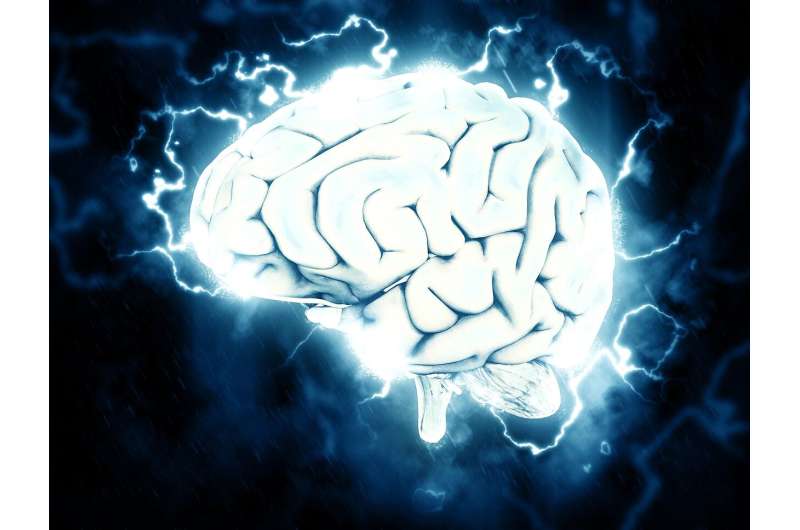How our brains cope with the constancy of change

Change is the only constant, according to Heraclitus. It may also be the most important variable for how our minds understand the world, say a group of UConn cognitive scientists.
Objects and people change around us constantly, and yet we can still identify them. A bowl cracks, a friend dyes her hair, an onion is chopped, but we can still tell it's our mother's soup tureen, our neighbor Nancy, or the same onion that sat intact on the cutting board a minute ago. How our brain keeps track of that is a mystery. Most theories of cognition describe events as something doing something to something else: the chef cuts the onion. But those theories don't explain how we know it's the same onion before and after it's chopped—or how we know it's the same chef who just walked out of the room, put on an apron, and walked back in to cut the onion.
The doing-something theories also don't explain the results of neuroimaging studies that show specific parts of the brain associated with language light up when thinking about objects that have undergone a change. The greater the change, the brighter the area gets. It lights up more for an onion that has been chopped, for example, than for an onion that has been peeled.
"What I wanted to know was why," says UConn cognitive scientist Gerry Altmann. He was considering this problem while teaching a graduate course on how the brain understands events this past spring, and he decided to pose the question to his students. "I didn't really expect an answer. And so when an answer was offered up that took my ingredients, turned them on their head and, in so doing, explained the effect, I was blown away," Altmann says.
The ingredient he gave them was that perhaps the more an object changes, the less you can do with it. But what, then, was the area of the brain doing when it lit up so brightly in response to change?
"We were talking about how we track the history of an object. The left inferior frontal gyrus lights up more when there's a change in state," and Gerry had previously explained it in terms of the difficulty of knowing that the new state and the old state are the same thing, says Emily Yearling, a developmental psychology graduate student in the class last spring. "It sounded very dissatisfying to us, and Gerry asked us what we thought." Altmann left the room, and Yearling and her two fellow students began to discuss it. Perhaps it was about prediction, they thought.
When Altmann returned, the students proposed their idea: if that brain area was performing a simple gating mechanism, shutting off possibilities that were no longer available for the changed object, well, doing that takes energy. And the more possibilities you have to shut down, the more energy that takes. That was why it was lighting up so brightly.
"We felt like we were saying what he'd already said," says Jenelle Salisbury, a fourth year philosophy graduate student.
But Altmann had never seen the problem in quite that light before. He was so impressed, he asked them a second question: what kind of experiment could they do to test this idea? Then he left the room again to get his now-brewed cup of coffee.
"We started talking about how it might happen. Then we started talking about chess," says Gina Digiacomo, a biomedical engineering masters student.
Chess was something all three of them had played, and Yearling was especially fond of it. There's only a finite number of possibilities in chess, and every time someone makes a move, the possibilities get either more or less constrained. You can calculate it mathematically. It would be easy to test, they thought—that same bit of the brain they'd been talking about should light up in proportion to those mathematical possibilities. When Altmann came back, they told him.
"It was unbelievably elegant," Altmann says. And it could connect the physical phenomena he and his colleagues had observed in the brain to the theory he'd been developing about how the brain tracks specific objects. The theory goes like this: it's the history of an object or person—how it changes in location, position, and state across time—that our mind tracks. How it does that allows the mind to know the onion is still the same after it's chopped, or that Nancy is still Nancy even with purple hair. It's the intersection of these histories that defines an event: When Nancy, the knife, and the onion all come together in space, Nancy chops the onion. That's an event. And the left inferior frontal gyrus tracks it, and applies the new constraints on what predictions the mind can make about what can happen next. And those predictions are part of the histories of objects and people our mind is tracking.
"If the new account is right, it would help understand better why those other things (language, change of state) are associated with that same part of the brain. It's all about prediction and constraining how the future might unfold," Altmann says.
Yearling and Salisbury would like to actually do the chess experiment and see if they can experimentally prove that the brain is responding to constraints in response to change. (They tried to tempt Digiacomo to do it with them, but she's graduated and pursuing work in the private sector.) Even now, some months later, Altmann is happy. The trajectories that brought an engineer, a philosopher and a psychologist into his classroom and led to that particular event, he says, opened a door into a possible future for theories of cognition, with implications for both human and artificial intelligence.


















